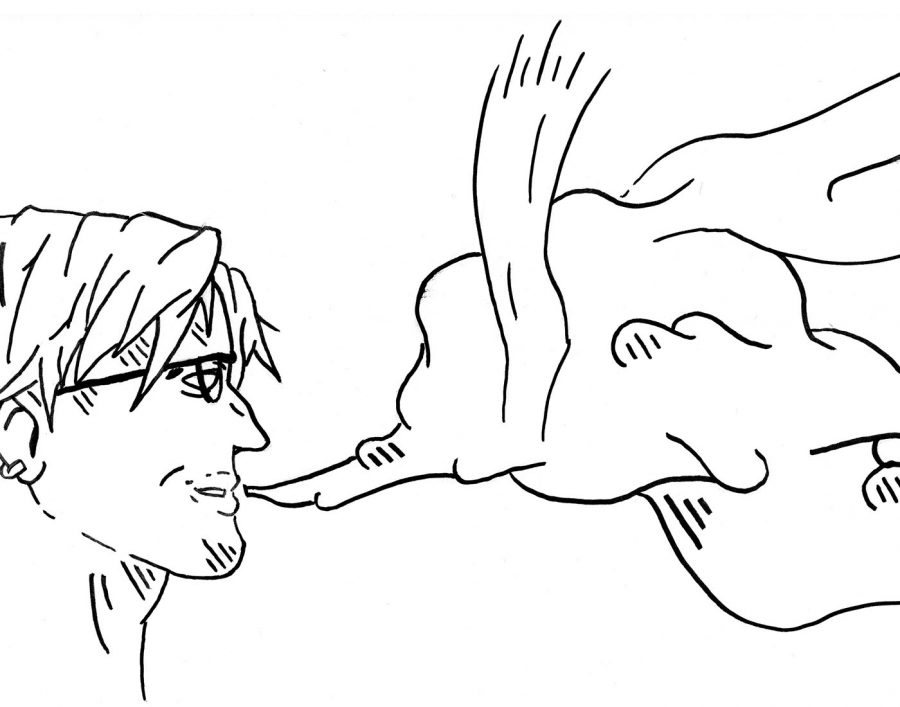Buzz around the school
OHS’s teen nicotine use
It is estimated that OHS has had 20 tobacco incidents on campus
March 22, 2018
Vapes, vaporizers, e-cigarettes; no matter what one calls it, most people know what they are. What was branded as the “healthy alternative to cigarettes and the future of smoking” is storming the nation. The increasingly easy availability to obtain these vapes is concerning, especially since underage kids are getting ahold of them. Tobacco is acquainting itself with the youth of cities across America, and Owatonna is no stranger.
WHAT IS IT?
Increased vape/ e-cigarette usage has been most popular in the teen age group. Attractive, safe and alluring flavors are where the main problem lies in underage usage. In the law of tobacco consumption, a person must be 18 years old to acquire tobacco.
Many people claim that vaporizers are not considered “tobacco products,” because of the properties of the substance that’s used to omit a vapor instead of harmful smoke. Vaping has been claimed to be a healthier alternative to smoking cigarettes by previous smokers. Some products of the e-liquid that is used for vaporizers, are not approved by the Food and Drug Administration (FDA). This can lead to leaving unknown and potentially harmful chemicals to lie within that concoction.
The most harmful chemical known in unapproved juices is called “diacetyl,” a butter-like substance that is present in some foods and alcohol, which can later be found in the lungs. Popcorn lung is irreversible, and the only known cure is a lung transplant. It is caused by unregistered and unapproved e-liquid labels, so it is important that the e-liquid states that the product is diacetyl-free and FDA approved, so it will not cause popcorn lung when using.
DANGERS
With the growing popularity of vaporizers, many questions are asked, including: How and why is it safe? Is it a better alternative than smoking cigarettes? In an opinion piece by the World Health Organization title, it is claimed that,“Vaping is still dangerous, and many vaporizers employ e-liquid or e-juice that contains nicotine, but usually not in the high concentrations that represent in cigarettes. Overall, it remains a very unhealthy situation, and the combustion process to produces the vape creates a lot of the carcinogens present in cigarette smoke as well.”
According to lung.org, “Inhaling too much of this chemical can cause tears and constrictions in the lung tissue, this is called bronchiolitis obliterans, also known as ‘popcorn lung’
The World Health Organization also found that, “E-cigarettes are likely safer than tobacco cigarettes, but the long-term health effects when used by non-smokers (including second hand inhalation) can lead to nicotine addiction, and there is concern that children could start smoking after using e-cigarettes. So far, no serious adverse effects have been reported in trials globally we have learnt, but definite less serious adverse effects include throat and mouth irritation, vomiting, nausea, and coughing.” Vaping is still a very new concern in the nation, and not much medical information has been published to justify the long term health effects for it.
There are also physical safety issues-in the news, people’s vapes are exploding in their faces, how does one know this won’t happen to them? The reason why vapes explode without warning is because the vaporizers that are sold to teens and some adults, are not authorized by legitimate companies. Replicas of the real vaporizer, or bootleg products, can contain improper wiring, faulty batteries and connectivity issues. Working with electronics that have incorrect wiring can produce heat, which can result in the explosions. It is always important to make sure that products bought are authorized by legitimate companies.
Peer pressure is tough. Kids just need to say no, which is very hard especially when friends are doing it. One thing to remember, even if you’re not doing it and you’re around people who are, it’s assumed you’re doing it too, which can result in consequences at home and at school.
— Anna Durst, OHS nurse
AVAILABILITY
Vapes are becoming increasingly available, and one issue with them is that minors are able to get ahold of them. In a North Carolina study, quoted by TIME magazine, “11 teens between the ages of 14 and 17 were asked to visit 98 of the most popular online vendors for e-cigarettes and attempt to purchase their products”. In North Carolina, it is illegal for minors to buy tobacco products, but of the 98 orders, only five were cancelled due to failed age verification. Minors are able to obtain these products either by having a friend or peer, whom is 18, buy it for them, or attempting to try and buy it themselves. After ordering online, some of the teens were asked to answer the door when the packages arrived, and the study found that none of the tobacco companies attempted to verify age. At least 95 percent of packages were simply left at the door.
According to a study from Oxford Academic, the United States use of e-cigarettes by minors between 2011-2013 has tripled, going from 79,000 to 263,000. The number has only continued to grow since 2013, and it will continue to grow until teens are informed of more dangers of vaping.
Many students may form their tobacco addictions after falling victim to instances of peer pressure. In the Steele County Free Drug Coalition MN student survey data from 2016, it was found that, “Cigarette smoking 4.7 percent of 8th graders, 3.6 percent of 9th graders and 13.5 percent of 11th graders reported cigarette smoking in the past 30 days.”
VAPING IN THE COMMUNITY
While trying to obtain opinions on vape usage around the high school, the student body was not willing to provide information, but it is obvious that there is usage among the student body. Owatonna High School is a tobacco-free campus, meaning anything that is listed as a tobacco product by the FDA or government. But students are ignoring the prohibition by the school and even the law.
Police liaison, Detective Brady Vaith, described what happens once students are caught on school property with a vape. Vaith said, “They usually get charged with having tobacco. What happens first, is the school will handle it, and if they find a vape on a kid or a student they’ll let me know and we’ll go from there and see if it matches the statue. If it does, they’ll be charged for having it, unless they’re 18.” In addition to federal charges, the school administration may also decide to have the student serve in-school suspension or out of school suspension, based on previous offenses. Assistant Principal Christopher Moore said, “This really depends on the situation, the number of times a student has been in the office and other factors. All students who do have tobacco and/or e-cigarettes/vaporizers are given school consequences and/or citations from the Owatonna Police Department.”
OHS Nurse, Mrs. Durst said, “Usage is heavy, and we see some trends especially with cigarettes. Some years are definitely worse than others.” Detective Vaith estimated that there have been 20 tobacco busts on campus this year, and said, “In school it’s mostly vaping and little bit of chew, but I wouldn’t be surprised if more was going on outside of school. Younger kids who don’t have a car will use the bathrooms (to vape), and people who do have a car will go out to the parking lot either during lunch or between classes.” Staff members are becoming more aware that student’s tobacco usage is growing and what they may be doing when leaving class or lunch. Mr. Moore said, “We are becoming increasingly aware that students are using e-cigarettes/vaporizers in the school setting, and on school grounds throughout the school day.”
PREVENTATIVE ACTION
To keep students from vaping during lunch, some bathrooms surrounding the lunchroom have been locked during that hour. Additionally, OHS has hosted a “Right to Know,” seminar earlier this fall on drug, alcohol, and tobacco use for parents. Unfortunately Detective Vaith described this event as “poorly attended.”
As far as preventative health measures, the safest and most effective way to avoid health complications is to simply not try tobacco or nicotine products. Students have found a way to get around tobacco usage, while still being a part of the vape craze. Students have also found non-nicotine vapes that they can use. These vapes are indistinguishable from nicotine vapes, but run on non-nicotine juice and water vapor alone.
While the appeal of vaporizers may be great idea for the teenager that is just trying to fit in, the risks associated still outweighs the benefits.
Vaping is being marketed as somewhat healthier than smoking cigarettes, but it comes with its own set of health concerns to consider. Mr. Moore adds, “This is a challenging issue to tackle as students believe this is a “cool” thing to do. As with any nicotine containing product, it is addictive in nature and has long-term consequences. We are not fully aware of the long-term health related consequences of these chemicals going into the lungs, the blood stream, and to other organs. As research is conducted on the long-term health related issues and it is shared with the general public, I am sure we will see a decrease in the number of individuals using these products.”
The implementation of laws regarding accessibility of vaporizers to minors may become a significant topic of discussion in the upcoming years, as the growing wave of vape-crazed teenages continues to progress.












